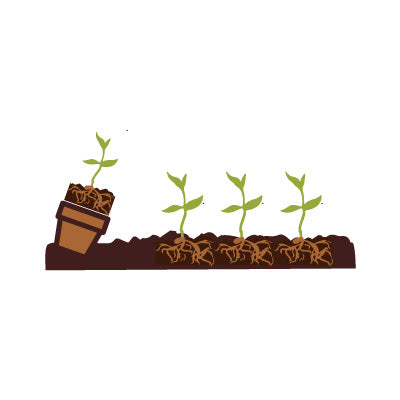STORING HERB SEEDS:
If you are not ready for planting, store your herb seeds in a cool, dry, and dark location. Most seeds have a long shelf life, but heat and moisture will shorten it. Dedicate a drawer or cabinet for storing your seeds where you can also house your gardening journal close at hand for dreaming, planning, and preparing.
The following steps will help you establish an abundant herb garden.

STEP 1 - PREPARE YOUR HERB SEEDS AND POTS
Follow any seed preparation directions your herbs require. In the meantime, prepare your pots. The best types of pots will contain holes in the bottom that permit proper drainage and aeration. Fill the container with rich potting soil and gently pat it down to prevent air pockets.

STEP 2 - STARTING HERB SEEDS INDOORS
Now it’s time to sow your herb seeds! The key here is to not bury the seeds too deeply, but rather just slightly compress them into the tightly packed soil. Once sown, make sure to water lightly and regularly. Place the pot(s) in a sunny area. Soon, you will begin to see your herb seeds germinate. Be sure to provide the baby seedlings adequate time to germinate before transplanting them—the general rule of thumb is to wait until you see the emergence of at least two sets of leaves.

STEP 3 - TRANSPLANT YOUR HERB SEEDS
Once you begin to observe the emergence of sturdy seedlings, you can transplant herbs to an outdoor garden (you may also keep them indoors in your kitchen where they will be easy to reach for your cooking needs). One handy method that we recommend prior to transplantation is to “harden” the seedlings. This technique simply involves placing the young seedlings outside for a few hours per day to acclimate them to the sunlight and temperature of the natural environment. After “hardening” for a week or so, your herb plants should be ready to withstand the rigors of the great outdoors!
Dig a hole roughly the size of the potted plant at hand, and then gently place the herb plant into it. Once planted, make sure to firmly compress the soil surrounding the young plant into a compact mass. Water once a day during the first week, and a few times a week thereafter.

